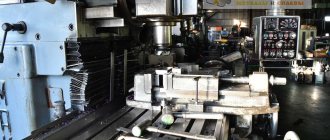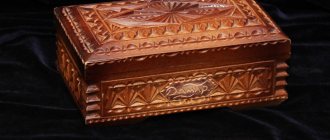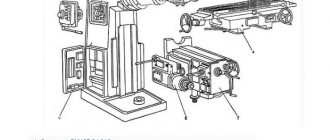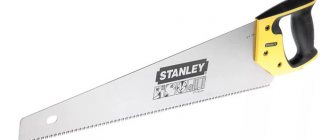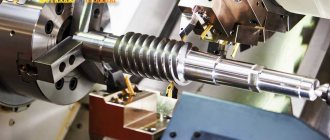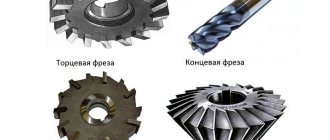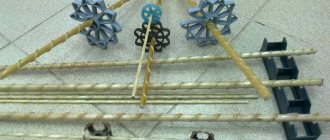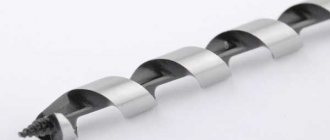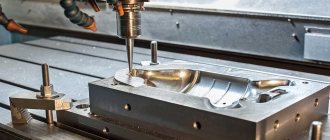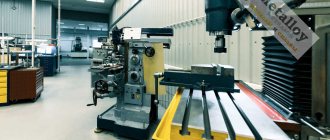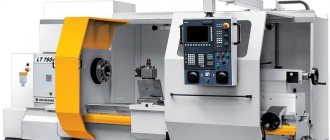Articles
All photos from the article
A milling machine is an indispensable type of woodworking equipment that is used in a wide variety of industries. In addition, a manual wood milling machine is a very useful tool for home craftsmen working with wood.
In this article we will take a detailed look at the existing types of this equipment, as well as their main functions.
Vertical wood milling machine
Wood milling machine
Material Information Category: Woodworking
Created: December 17, 2012
Milling machines have a wide range of uses. Basically, the milling machine is intended for the production of shaped parts from wood; it is also used for planar milling and processing of profiles, or for milling volumetric reliefs of products and elements. These woodworking machines must undergo special certification and meet regulations and all safety rules that are necessary during operation.
Wood milling machines are sometimes equipped with a special vacuum cleaner for industrial purposes to remove wood dust and shavings from the surface of the operating machine and the place where processing takes place. The base of the milling machines is a strong cast device that is resistant to vibrations. While working on the woodworking machine, you can conveniently, quickly and safely change tools.
From the very beginning, the wood router was intended for planing profile and flat material. For example, with the help of this equipment you can polish the edges of workpieces, and also use it in the production of plinths, grooves, and ordinary tenons. If you use special attachments, then the milling machine can be classified as a universal woodworking equipment. Therefore, it is possible to finish timber, grooves, sockets and eyes in small industries or in your own workshops. A milling machine is a relevant and indispensable item in every workshop.
What you can do when working as a router: techniques and techniques
How to work with a hand router at home? Having mastered a wood router, you can change your home decor, decorating pieces of furniture and wooden doors. The prerequisites for starting your own business appear.
The entire range of possible work performed with a manual milling cutter is divided into categories.
The main direction of wood processing comes down to cutting grooves. Depending on how the cutter is positioned on the working material, blanks with different grooves are created (open, blind, deep and narrow).
Open groove
If you need an open groove starting from the edge, the cutter blade is positioned with a protrusion beyond the edge of the wood. Then the cutting element is installed and the motor is started. After processing the edge of the craft, the knife is raised, its fixation is loosened, and the electric milling machine is turned off. Blind grooves are formed using a similar method, only the cutting mechanism is positioned at the point from which the slot begins.
Deep groove
The depth of the groove depends on the plan, sketch, and author's idea. If the depth is above 5 mm, then the work is performed gradually in several passes. In this case, with each approach the depth of the groove increases. For hard wood species, several passes must be made. To preserve the geometry of the groove and obtain a smooth surface, the last recess is limited to one and a half millimeters.
Narrow groove
To obtain a part with a narrow groove, a flat base is attached to the router sole. This is done to ensure the correct trajectory of the knife blade. The axes are placed on the same line as the center of the cutter. When working with a hand cutter, it must be done slowly, without jerking, so that the guide parts fit tightly to the sides of the workpiece.
End surface
Processing the end part of a wooden semi-finished product until a smooth edge is obtained is a job that requires skill. You need to start such work by forming a flat cut by moving the knife along the course of its rotation. You will get a high-quality sample of the main material. If it is necessary to correct individual places, then you need to run the cutting mechanism against the direction of its movement.
Curved edges
Using a hand router, you can create curved edges according to a template, strictly following the trajectory of the knife. The template is installed on the blank being processed.
With this processing method, it is possible to produce identical parts in an unlimited number.
Decorative finishing
Mastering a milling machine and the methods of working on it opens up wide opportunities in the field of finishing various elements, paintings, and carving figured parts. Increasing experience and skill provides the prerequisites for the production of complex projects.
Milling machine device
The main operating parts of a wood milling machine are the base, the front disc brake mechanism (caliper), the working table, the insert spindle and spindle shaft, and of course, the cutting tool.
The spindle-shaft is mounted under the work table on the front disc brake mechanism, and its upper end passes through a hole in the work table. The front disc brake is adjustable - lowered and raised, placed in the desired position. An insert spindle and cutting tool are attached to the top of the spindle-shaft.
In order to perform straight milling, you need guide elements - a bar or a ruler. The ruler can be adjusted. To fix the stops on a wood milling machine, there are grooves specially designed for this. A large number of various knives, milling heads, discs and various cutters are used as cutting tools.
What technical characteristics must be taken into account when choosing a router?
Power
In a unit of time, the operating mechanism is capable of processing a certain number of parts. This value determines the power of the unit. Which machine to choose so that the operating speed of the machine suits the owner, and the capabilities of the equipment correspond to the characteristics of the material being processed? The answer contains the concept of “power”. The electric motor determines the force and power of the unit. The technical characteristics of the mechanism (diameter, length of the cutter), service life must correspond to the power of the electric engine.
Based on these parameters, light, medium or heavy milling cutters are determined. With an increase in power, the weight and parameters of the engine increase, which means the entire milling machine.
Rotational speed
Productivity is affected by the speed at which the spindle rotates. This value is determined by the number of revolutions per minute. The unit of measurement is rpm. When choosing a cutter, the physical and mechanical uniqueness of the material to be processed must be taken into account. What matters in the work is the tool, the planned depth and width of the finish.
Cutting stroke
The depth to which the tool is capable of plunging into the material being processed is called the working stroke. For household machines, the interval is from 20 mm to 50 mm. The thickness of the parts being processed depends on what part of the technological process is completed during a single movement of the tool relative to this element. In order not to spoil the workpiece or damage the tool, it is impossible to select a groove of the required depth in one pass of the cutter.
Additional functions
- Constant electronics controls the operation of the motor, stabilizes the speed of rotational movement of the spindle and supports and makes it possible to perform high-quality processing of the material. Installed on professional machines.
- Soft start ensures a gradual start of speed, eliminating sudden jerks, and safety. With this function, the risk of damage to the workpiece is minimal.
- The overload protection system is activated when the temperature of the electric motor winding reaches a critical point. The system turns on in different ways - in the form of a light indicator or a complete automatic shutdown of the engine. Mounted on professional models.
- Most milling cutters are protected against unintentional start-up. The price category does not include the installation of a protective button, which allows the trigger to be blocked.
Types of wood milling machines
There are different types of milling equipment, which can be used to trim a wide variety of wood elements. These devices serve a variety of purposes and have slight differences in design. However, each wood milling machine is relatively difficult to use and requires special care when operating. Milling occurs at extremely high speeds, and there is no way to completely separate the cutting tool from the person.
LET'S CONSIDER THE TYPES OF MILLING MACHINES FOR WOODWORKING:
CNC milling machine
This type of machine is relatively new. CNC means “Numerical Programming Unit”. This means that the CNC wood router is equipped with a microprocessor, which has a high-speed storage device and an operating system. Such a device is very useful in an industrial enterprise, since thanks to the ability to configure tasks and programming, it performs several processes at the same time. This machine significantly increases production productivity because the processing time of each element is significantly reduced. Moreover, such wood routers provide immense assistance in the process.
Manual milling machine
These machines are designed for less work. Its dimensions vary greatly and it is already used in large enterprises, but in small enterprises and private workshops it will be very useful.
As a rule, a manual wood milling machine is used to produce grooves that connect various elements. It will be very difficult to make very small grooves without such a device.
Often there is a problem of processing an object with small details that serve for decoration, and using a manual milling machine in this case will be an ideal option. Furniture production requires the presence of ties or other connections, and using a manual milling machine their manufacture will not be difficult.
Copy milling machine for wood
Sometimes there is a need to complete extremely difficult work, in which there are many different patterns and elements. In this case, you need to make two or more objects extremely accurately and identically. Doing such a thing manually is very difficult and also time-consuming. Wood copying and milling machines will be useful here. To ensure that all the details are exactly the same, as a rule, this device uses ready-made stencils. These stencils are samples made of plastic or wood. The workpiece is pressed by a vacuum and the stencil is fed. The result is flawless copying of lines and identical elements with complex patterns.
Technical characteristics of household cutters
After you have selected a wood milling machine for your home workshop based on its type and type, it makes sense for you to carefully study its technical characteristics. For example, with regard to power, 400 W will be sufficient for most small work on processing wood products. At the same time, it makes no sense to purchase a more powerful device for such needs, as this will lead to additional financial costs.
A home wood router can only operate effectively at certain speeds.
The second parameter that is worth paying attention to is the processing speed of products. Thus, a home wood milling machine can only operate effectively at certain speeds. If you are not going to process large batches of the same type of products, there is no point in purchasing a multi-speed device. It is worth noting that it is highly desirable that it be equipped with a gearbox and devices for smooth descent and speed switching.
As for such parameters as the distance from the spindle axis and the dimensions of the working platform, they directly affect the dimensions of the workpieces processed on the machine. This is worth keeping in mind when selecting the equipment you need.
Separately, it is worth mentioning the weight and dimensions of the machine. So, they must be such that the device can be easily removed into the utility room after installation on the workbench and its use. In this case, it is advisable that your milling machine is also equipped with a dust extraction device. This will allow you to work in comfortable conditions and at the same time protect your health.
It is advisable that the milling machine be equipped with a dust extraction device
In principle, the modern market of machines and tools for woodworking is able to provide the home craftsman with almost any device for woodworking, but the whole issue comes down to price. The fact is that the average wood milling machine can cost several thousand rubles, and not everyone can afford it.
In these conditions, all that remains is to make a wood milling machine with your own hands. This will significantly help reduce the financial expenses that a home master may incur when equipping his personal workshop, and will also allow him to purchase a device that is in demand on the farm.
Turning and milling machine
This type of milling equipment is designed to give shape to a workpiece using wood processing using the profile method. A wood turning and milling machine can process multi-sided, screw and round parts due to various programming options. You can use lathe knives or finger and disk cutters, it depends on what needs to be processed. Complex elements can be brought to life using a connected circuit design of wood turning and milling equipment.
Scope of application
Hand-held wood routers are a tool in which the cutting element is a milling cutter installed in a collet-type chuck, which, in turn, is placed in a mechanical gearbox driven by an electric motor.
Manual milling cutters are used for:
- drilling holes of any diameter and shape, which depends on the size of the cutters used;
- leveling wooden surfaces, as well as the contours of parts and wooden blanks;
- cutting various grooves, splines and tenons;
- profiling of various types of edges;
- making decorative carvings.
Carving is one of the main functions of hand-held wood routers, and for drilling and leveling, as a rule, special types of hand tools (drills, planes, etc.) are used.
Artistic carving is one of the uses of such a tool
